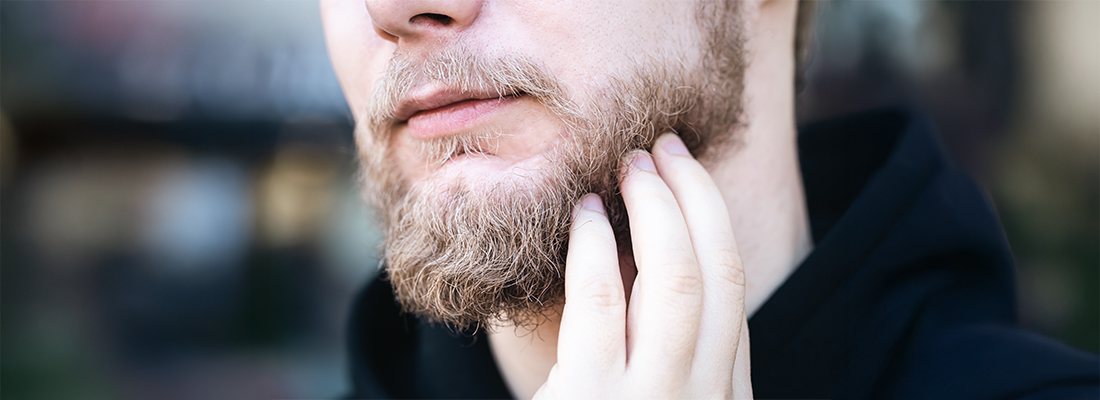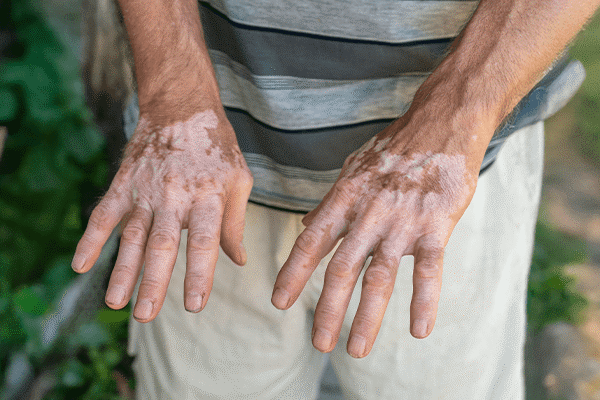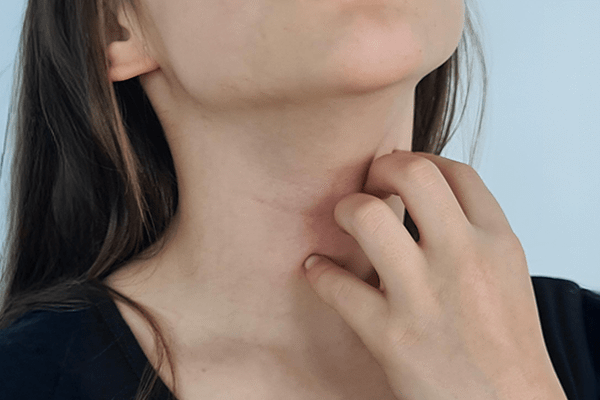
Imagine standing in front of the mirror, carefully grooming your beard, when you suddenly notice a bald spot on beard. At first, you might assume it is just uneven growth or a temporary patch. But over time, the patch enlarges, the beard hair fall worsens, and soon you realize your beard hair falling out is not random, it could be a condition known as alopecia barbae. For many men, a beard is not just facial hair; it is an expression of personality, masculinity, and confidence. Losing it unexpectedly can affect self-esteem and emotional well-being.
Alopecia barbae is a type of autoimmune disorder that specifically targets hair follicles in the beard area, causing patchy hair loss. While the condition is not life-threatening, it can be emotionally distressing and socially challenging. Thankfully, with early detection, proper diagnosis, and effective alopecia barbae treatment strategies, it is possible to manage the symptoms and, in some cases, even regrow the lost beard hair.
In this blog, we will explore what this condition is, its prevalence, causes, symptoms, and the most effective treatment options. We will also highlight management strategies, answer common concerns such as how to fix bald spots on beard, and provide insights into alopecia areata beard clinical trials that may shape the future of care.
Prevalence
Studies suggest that alopecia barbae is a subset of alopecia areata, which affects approximately 2% of the global population at some point in their lives. While exact statistics on this disease alone are limited, research indicates that men between the ages of 20 and 40 are most affected. Beard-specific hair loss is often overlooked in medical literature, but clinical observations show that the condition is rising, due to autoimmune predispositions, stress, and genetic factors.
Interestingly, patients with alopecia areata beard sometimes experience hair loss in other areas, including the scalp or eyebrows, indicating a systemic immune response. The psychosocial impact is profound men often report anxiety, embarrassment, and reduced confidence when dealing with beard hair fall or a persistent bald spot on beard.
Also read: Retrograde Alopecia: Hidden Causes & Clinical Treatment Options
Culprits Of Alopecia Barbae
The exact cause of this condition is complex, but research identifies several contributing factors.
| Causes | Description |
|---|---|
| Autoimmune Response | The body’s immune system mistakenly attacks hair follicles, leading to beard hair falling out. |
| Genetics | A family history of alopecia areata beard or autoimmune conditions increases risk. |
| Stress | Physical or emotional stress can trigger or worsen beard hair fall. |
| Hormonal Changes | Fluctuations in hormones like testosterone and cortisol may influence beard hair growth. |
| Environmental Triggers | Viral infections, diet, or environmental toxins might act as triggers. |
Signs & Symptoms of Alopecia Barbae
Recognizing the symptoms early can make treatment more effective.
| Symptoms | Details |
|---|---|
| Patchy Hair Loss | Noticeable bald spot-on beard forming in circular or oval shapes. |
| Itching or Burning | Mild irritation in affected patches before beard hair falling out. |
| Smooth Skin Patches | Hair loss areas appear smooth and soft, free of scarring. |
| Sudden Shedding | Rapid beard hair falls without significant pain. |
Potential Treatment Options
When considering alopecia barbae treatment, it is important to understand that no single therapy works for everyone. Treatments aim to suppress immune attacks, stimulate hair regrowth, and manage psychological stress.
| Treatments | Explanation |
|---|---|
| Topical Corticosteroids | Reduce inflammation and help hair regrow. |
| Minoxidil | Widely used to encourage new beard hair growth. |
| Immunotherapy | Applied chemicals trigger an allergic reaction, potentially restarting hair growth. |
| Oral Medications | Immunosuppressants may be prescribed in severe alopecia areata beard cases. |
| Laser Therapy | Emerging option to stimulate follicles. |
If you have been wondering how to fix bald spots on beard, the answer often lies in initial treatment and consistent management.
Also read: Alopecia Areata Self-Care: Strategies for Managing Symptoms
Alopecia Clinical Trials in Treatment
The future of alopecia barbae treatment is promising, with new therapies under investigation. Dermatology clinical trials are exploring JAK inhibitors, biologic drugs, and stem cell-based approaches to halt the immune attack on follicles. These studies could redefine how we treat alopecia areata beard and offer long-term solutions for patients struggling with beard hair fall.
Management Strategies
Living with alopecia barbae requires more than just medical therapy, it is about lifestyle and self-care too.
- Stress Management: Techniques like meditation and exercise reduce stress, a known trigger of beard hair falling out.
- Nutrition: A diet rich in vitamins (biotin, vitamin D, zinc) supports healthy beard growth.
- Grooming Adjustments: Strategic trimming can make bald spot-on beard less noticeable.
- Support Systems: Joining support groups helps men cope with the emotional challenges of alopecia areata beard.
- Cosmetic Solutions: Beard transplants or dermal fillers are advanced options for severe cases.
How to Fix Bald Spots on Beard: Practical Tips
If you are struggling with how to fix bald spots on beard, here are actionable strategies:
- Start topical or oral medications under a dermatologist’s guidance.
- Massage affected areas to stimulate blood circulation.
- Avoid harsh grooming practices that may worsen beard hair fall.
- Explore PRP (Platelet-Rich Plasma) therapy, which shows promise in regrowing beard hair.
- Maintaining consistency of treatments takes time, and patience is key.
These solutions not only address the medical side but also help restore confidence when dealing with beard hair falling out.
Takeaway
Alopecia barbae may not always have a permanent cure, but with advancing therapies, lifestyle management, and clinical trials, the outlook is brighter than ever. Whether you are exploring alopecia barbae treatment, concerned about how to fix bald spots on beard, or searching for answers to persistent beard hair fall, the key is early recognition and proactive care.
New clinical research in alopecia areata and innovations in regenerative medicine give hope to men worldwide struggling with this condition. Do not let beard hair falling out define your confidence, effective strategies exist to manage, treat, and even regrow your beard.





